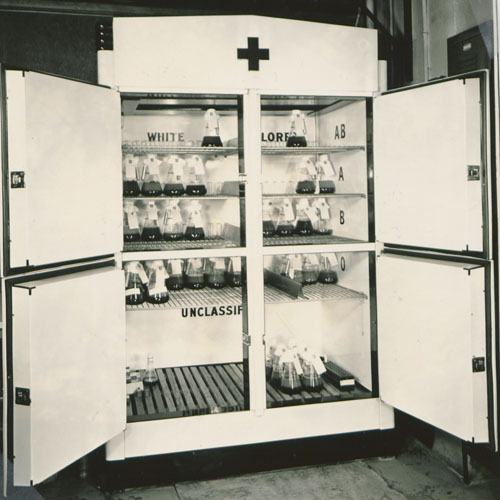How to Store Blood in a Laboratory Refrigerator

Blood in the human body is normally sterile. After contact with the external environment, it is exposed to infection by micro-organisms and it can become unusable. So, the blood must be properly stored after intake to maintain its properties.
The result of laboratory analysis not only determines the accuracy of applying analytical procedures but also the environment in which the patient is to take the material for analysis. If you want to store blood in laboratory refrigerator, follow these easy guidelines.
Things required:
– Sterile refrigerator
– Glass or plastic containers
– Glucose-citrate solution
– Ionite resins
– Antibiotics
Instructions
-
1
Use regular refrigerators for storing blood even if it requires zero room temperature. Try to store blood at low temperatures after using special procedures. Refrigerators are primarily used for the storage of blood and all the blood components. It is a good idea to store blood separately and not to mix with any other items. Try to find the coldest part of the refrigerator so that the blood stays cold constantly. You can also purchase specially designed laboratory refrigerators that only handle the storage of blood and other vital chemicals. Most laboratories have these types of refrigerators as they are specifically designed to handle blood so everything from the shelves to temperature settings is automatic.
-
2
Keep the blood in sealed glass or plastic containers. They should have a label indicating the blood, temporary fence, nature conservation and the names of the donor. For example, if you are about to store “A +ve” blood, make sure you put a label on it. It is very important that the blood is in the proper containers to ensure it stay sterile. There are many different types of plastic bag like containers that are specifically designed to store blood. These containers can be used directly after removing from the refrigerator, making them extremely useful when blood is needed in a hurry. You can find many different containers online or at a medical supply store which are not that expensive and relatively easy to purchase and use.
-
3
Blood collected for analysis should be stored at +4 ° C. The temperature should be constant and you can increase the temperature up to +6 ° C. If your refrigerator is specifically designed for handling blood then there shouldn't be any problems with the temperature settings as it will handle this for you automatically. However, if you are using a normal refrigerator then you will have to check for the temperature settings and make sure that they are adjusted accordingly.
-
4
Blood collected for later transfusion should be preserved for better safety. For conservation, use glucose-citrate, citrate-salt solutions, ionite resins and antibiotics. Antibiotics are added to get rid of bacteria that may have gotten into the blood.







